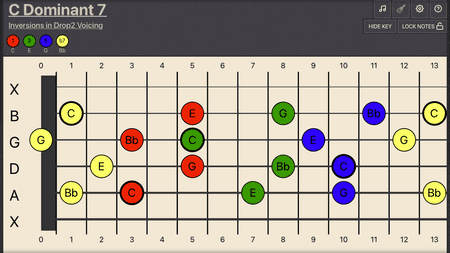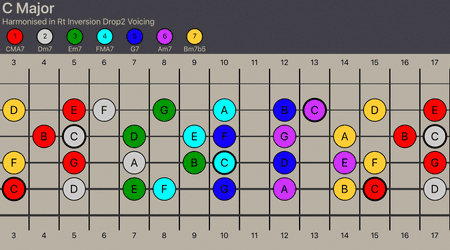![Creating Exercises And Practice Routines Using Only Four Notes]()
Creating Exercises And Practice Routines Using Only Four Notes
Today’s post introduces creating practice routines and exercises using only four-notes a framework. Using only four notes enables a refined approach to survey fretboard opportunities and helps develop a creative understanding of harmony. Youtube Playlist Focussing On Practice Exercises Using Four notes I have released a new YouTube playlist about practice routines and exercises using […]
![Creating Exercises Using Seven-Note Diatonic Scales]()
Creating Exercises Using Seven-Note Diatonic Scales
Today’s post introduces creating practice routines and exercises using seven-note diatonic scales as a framework. Unlike practice routines using only three or four individual notes, seven-note diatonic scales can be derived into many different types of chords and allow for a huge variation of options. However, While it may seem complicated, there are underlying patterns […]
![Creating Exercises And Practice Routines Using Only Three Notes]()
Creating Exercises And Practice Routines Using Only Three Notes
Using three note collections to develop practice routines may seem limiting, but their simplicity is provides advantageous opportunities. One crucial aspect of practice routines using only three notes is they allows for a refined approach to survey fretboard opportunities and creative harmony. I have released a new YouTube playlist that is all about practice routines […]
![Take Advantage Of Two String Patterns.]()
Take Advantage Of Two String Patterns.
Today’s post will examine how to take advantage of two string patterns. A useful method for organising fretting positions of single-note is to create a pattern using only two adjacent strings. Enabling a pattern where the fretting remains the same as it moves through different octaves. It could be scale or an arpeggio of a […]
![Arpeggiating Three Note Chords Using Diagonal Positions]()
Arpeggiating Three Note Chords Using Diagonal Positions
There has been a specific focus with using three-note chords in recent posts (here and here). None of the above posts have looked into arpeggiating three note-chords as sequential single notes and none of the examples contained two adjacent notes plucked on the same string. Playing three-note chords sequentially offers interesting creative opportunities. In this […]
![Close Voicing Moving Across Adjacent Strings]()
Close Voicing Moving Across Adjacent Strings
In this post we will examine how we can learn from close voicing moving across adjacent strings. The previous two posts, Alternate Picking Using Three-Note Triads In Closed Voicing Along The Strings and Fingerstyle Picking Using Four-Note Triads In Closed Voicing Along The String, have focussed on moving between the inversions of a chord along […]





